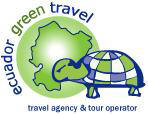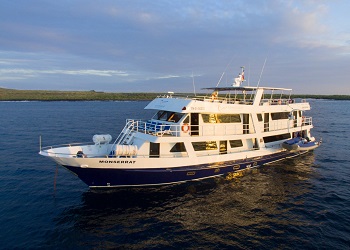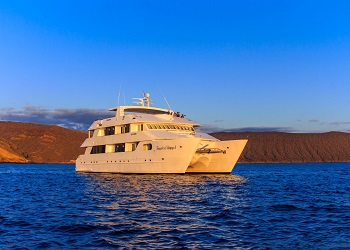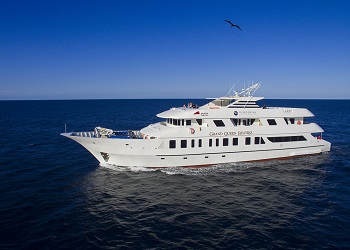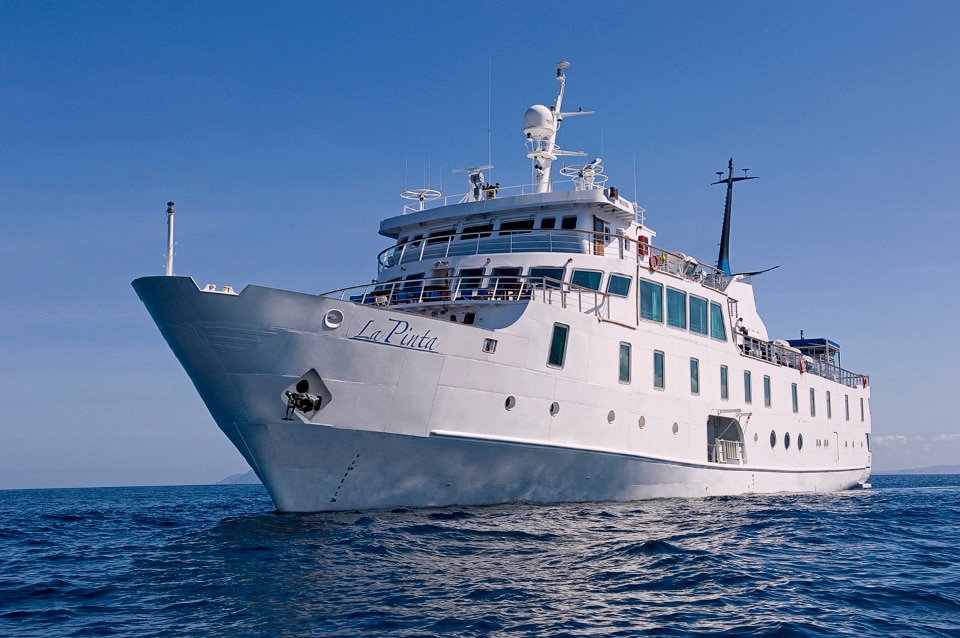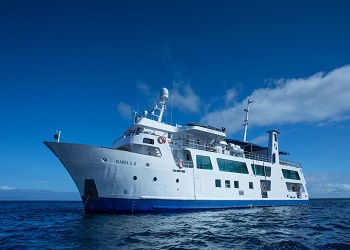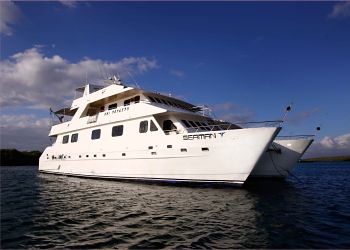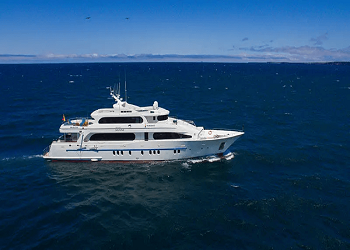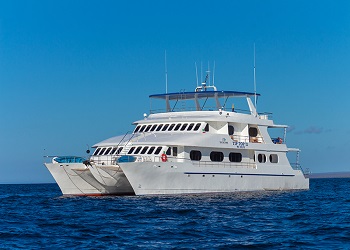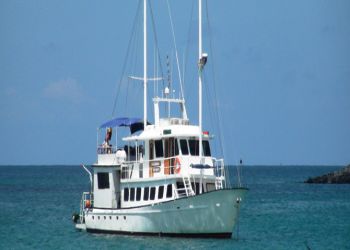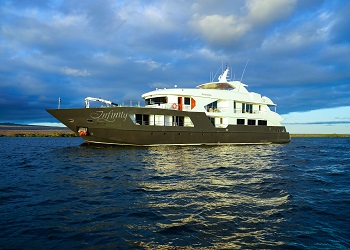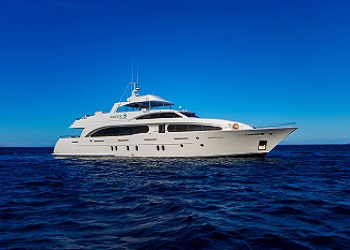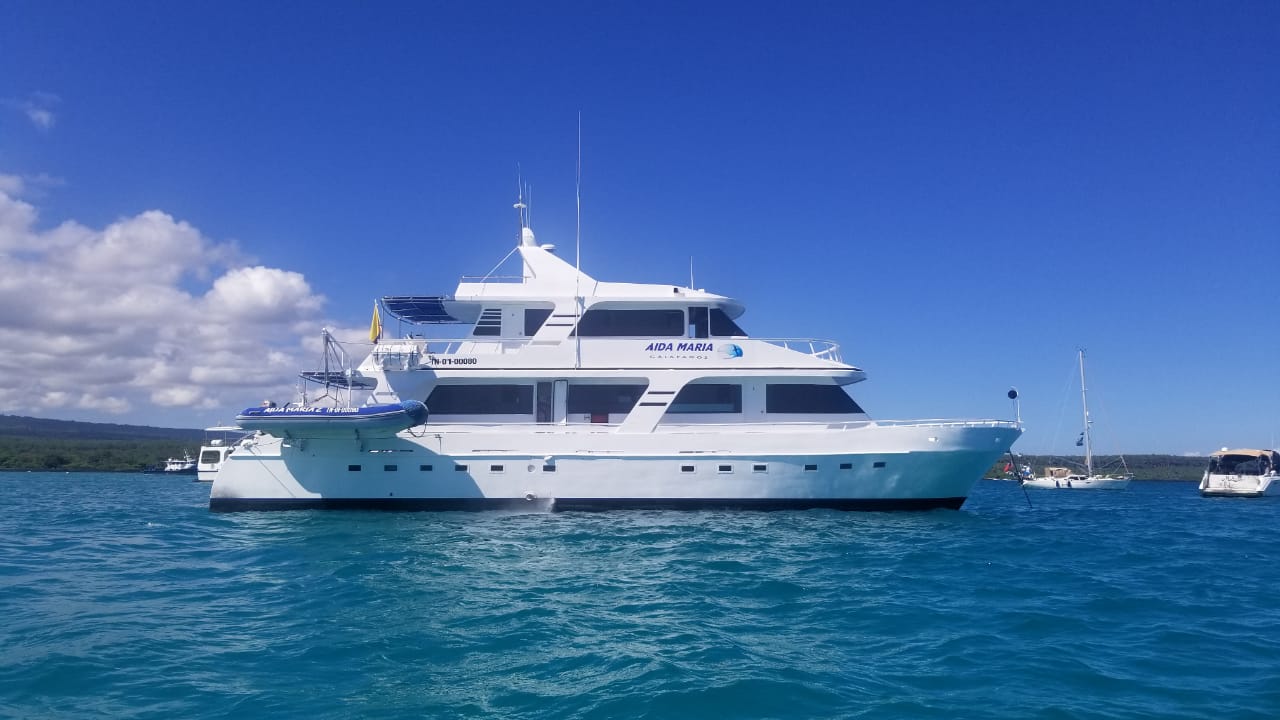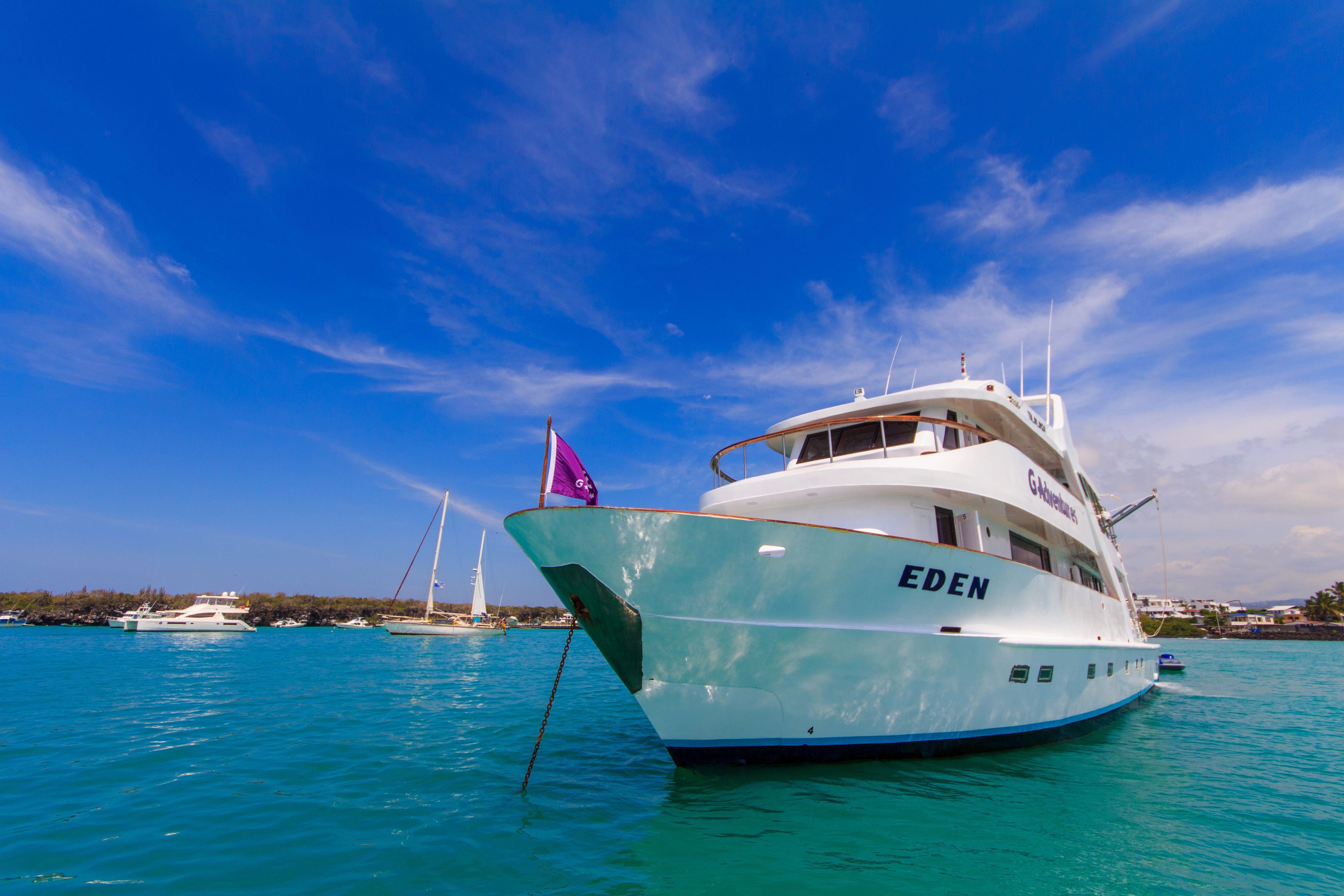DAY 1:MONDAY
AM: SAN CRISTOBAL AIRPORT
Upon arrival at Galapagos, you will pass through an airport inspection point to ensure that no foreign plants or animals are introduced to the islands, as well as to pay the park entrance fee of $100 (unless it has been prepaid). A guide will meet you, help you collect your luggage, and escort you on a short bus ride to the harbour, where you will board the Estrella cruise.
You will be assigned to your cabins, and lunch will be served shortly after.
PM - INTERPRETATION CENTER / COLORADO HILL (SAN CRISTOBAL)
You will visit an Interpretation Centre, where photos, historic documents and maquettes will help you get a glimpse of the seriousness and complexity of preserving the unique ecosystems of Galapagos.
After, you will visit Cerro Colorado, where a Tortoise breeding centre was established to manage the conservation efforts of this animal. During this visit you will be educated about the environmental concerns of the islands, observe breeding tortoises and follow an interpretive trail. Along
this trail it is possible to see different species of native and endemic plants as well as birds including the San Cristobal Mockingbird, Yellow
Warblers, and many species of finches and the Galapagos flycatcher. Return onboard for refreshment, dinner, and enjoyment of the amenities onboard.

DAY 2: TUESDAY
AM: PITT POINT (SAN CRISTOBAL)
The wind-sculpted cliffs of Pitt Point were the first sight of land when Charles Darwin arrived in the Galapagos aboard the HMS Beagle on September 15, 1835. Today you will disembark to that very same small green sand beach, where you will first be greeted by a group of barking sea lions.
Behind this dreamy beach, crossing some thorny bushes, begins a trail that will take you to the top of the cliff through a ravine. While you ascend, marvel at the landscapes of this geological wonder, where its possible to find three species of boobies breeding and playing: blue-footed, red-footed and Nazca. Two species of frigate birds can be found as well (Great and Magnificent) Do not miss the chance to snorkel or kayak around these far-away, dreamlike shores.
PM: KICKER ROCK / WITCH HILL (SAN CRISTOBAL)
You will navigate to Kicker Rock, an impressive natural sculpture that rises up from the ocean at the northeast coast of San Cristobal Island.
From the side it has the shape of a giant shoe upside down with the tower as a high heel (hence its name Kicker Rock). In its longitudinal
direction, it rather resembles a sleeping lion (which explains its Spanish name Leon Dormido).
After, you will begin your adventure at Witch Hill.
Witch Hiill is the remains of a tuff cone, and its primary attraction is a coral sand beach that opens into a tranquil bay. Snorkelling here leads to a marine marine habitat for marine iguanas, stingrays, white-tipped sharks, eagle rays, turtles, morays, garden eels and many kinds of reef fishes.
Behind the sand dunes of the beach, there is a dry dark lava flow with salty ponds, which serve as a refreshment spot for iguanas, as well as a strategic place to observe coastal and migratory birds, including pelicans, blue-footed boobies and swallow-tailed gulls.

DAY 3 - WEDNESDAY
AM - GARDNER BAY
We will keep exploring Española island, the oldest in the archipelago, estimated at over 4 million years old, located in the extreme southeast of the archipelago. On the north-eastern coast of this island, Gardner Bay offers a wonderful place to refresh in the turquoise sea and to snorkel side
by side with eagle rays, golden rays, barracudas, batfish, turtles, sea lions, and white tipped sharks.
PM - SUAREZ POINT
This island is one of the greatest in the world for birdwatchers. Different kinds of finches, frigates, blue-footed boobies and Nazca boobies can
be found, as well as the endemic Española mockingbird, Albatross, and Galapagos hawk.
Watch your step, because each Albatross' couple lay an egg on the floor and make it roll over to improve hatching success. The juveniles attend the cliffs of the island to learn to fly by jumping into the abysm.
And the chicks are organised in nurseries where they will safely remain while the adults are away at sea. Another highlight during this visit is “El Soplador”, a 25 m water geiser produced by ocean waves crashing with great pressure with cracks in the island’s cliff, spouting up through a lava tunnel. This site offers a fantastic background for a meditative experience or a memorable
photo.

DAY 4 - THURSDAY
AM - BARONESS LOOKOUT, POST OFFICE BAY
We navigated to Post Office Bay. This mailing station has been intermi- ttently in use since the eighteenth century, when the Galapagos was a resupplying port for Pacific pirates.
You can join their tradition and send greeting cards to your beloved ones worldwide using the historical barrel (it works). Nearby, the beach is normally visited by sea lions, pacific green turtles, golden rays and even penguins. Next, you may climb the miniature basaltic cone of Baroness Lookout and take in the paradisiacal coastal views. This viewpoint was the favourite spot of one of Floreana’s first modern-era colonists, the eccentric self-proclaimed Baroness and ‘Empress of Galapagos’ Eloisa von Wagner Bosquet, who even built her house a few metres behind. She and one of her lovers were the first in a series of mysterious disappearances and deaths occurring in this island during the 1930s.
PM- CORMORANT POINT, CHAMPION ISLET
This morning you will have a wet landing on this peninsula that is covered with aromatic palo santo forest. The sand at the beach is green, because it contains a high percentage of glassy olivine crystals that have been blown out by the surrounding tuff cones. Crossing to the other side of the peninsula, there is a ‘flour sand’ beach that originated from coral pulverized by Parrotfish. From the shore you could spot schools of stingrays who love burying
themselves in the sandy bottom. During the first months of the year, Pacific green turtles come ashore to bury their eggs. Return on board.

DAY 5 - FRIDAY
AM - NORTH SEYMOUR ISLET (LAND VISIT)
Today’s visit is to a bird’s paradise. The islet of North Seymour is actually part of the seabed that was uplifted by the movement of tectonic plates, and now hosts the largest breeding colonies of both the Magnificent and Great Frigatebirds in the Galapagos. You will explore a circular trail that lets you approach these and many other birds from a distance of only a few respectful steps. This islet is also inhabited by the adorable blue-footed boobies, which can be seen courtshipping, mating, or nurturing their fuzzy chicks. They might approach you, as they are fearless and very curious.

Transfer To Baltra Airport
